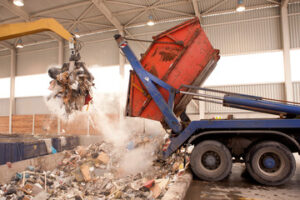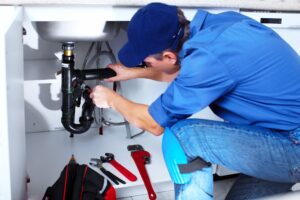As environmental consciousness continues to grow, junk removal companies are leveraging technology to promote eco-conscious practices. This includes adopting online booking platforms, mobile apps, and advanced scheduling systems that streamline customer interactions.
Efficient sorting is another key element, as it funnels items towards their respective paths and enables efficient e-waste processing. Junk Removal Perth in turn, minimizes waste and conserves reusable materials.

Trucks & Equipment
Junk removal is a growing industry and, as it expands, the need for sustainable practices grows. With a focus on sustainability and eco-consciousness, the industry is incorporating new technology to increase efficiency and reduce waste. These technological advancements include the use of specialized trucks and equipment, GPS tracking for route optimization, mobile apps for junk removal, and more. These innovations are helping to streamline waste management processes and minimize the industry’s carbon footprint.
In addition to promoting environmentally responsible habits, these changes are also boosting the economy. By reducing waste disposal costs, these innovations are encouraging consumers to choose eco-friendly junk removal services. Additionally, many companies are donating usable items to local charities, which helps to reduce packaging waste. This, in turn, boosts the economy by providing jobs and generating revenue for the community.
Specialized Junk Removal Trucks
While anyone can get rid of their junk using basic hand tools, professional junk removers need a variety of specialized equipment. This includes shovels, rakes, garbage bags, waste bins, and safety gear. In addition, a truck is essential for hauling waste to the landfill or recycling center. However, it’s important to consider the initial and maintenance costs of these specialized vehicles. Some also require a specialized license and training, which can be a barrier for some individuals and small businesses.
One of the most innovative developments in junk removal is the rise of electric trucks. These vehicles produce zero emissions and are more efficient than their gas-powered counterparts. They also have a greater hauling capacity and can be used to transport larger loads of trash. In addition, some models have features like tailgate locks and watertight seals to protect the waste from weather elements.
The rising popularity of these trucks is a reflection of the industry’s increasing commitment to sustainability. Consumers are demanding that companies adopt eco-conscious practices, and this trend is reflected in the industry’s growth. Technological advancements are supporting this trend, with advances in AI-assisted sorting reducing landfill waste and improving e-waste handling. Moreover, innovative technologies are now converting waste into energy, a clean, renewable resource that can be used again and again.
Mobile Apps
Junk removal businesses use junk trucks or mobile dumpsters to transport waste to landfills and other facilities. Asset Management Solutions helps them manage their vehicles and dumpsters efficiently, ensuring they are always at full capacity. This increases productivity and reduces costs. It also enables them to save on fuel and emissions by optimizing routes, making their business eco-friendly.
A growing number of consumers are environmentally conscious, demanding junk removal services that prioritize sustainability and responsible business practices. In response, companies are investing in innovative technologies to streamline their waste management processes. These include e-waste recycling, AI-assisted sorting, and data-driven business models. In addition, several junk removal companies are partnering with local charities and nonprofit organizations to donate reusable items to people in need. This is a great way to improve community relations and foster a positive image for the brand.
Another major trend in the junk removal industry is a focus on reducing packaging waste. To reduce the amount of unrecyclable materials that end up in recycling centers, companies are developing new, sustainable packaging options. They are also exploring biodegradable and reusable materials, which can significantly reduce their carbon footprint.
Running a junk removal business is a demanding task. Chaotic procedures don’t help teams succeed or please clients, but they can be avoided with the latest technology. Junk removal software simplifies tasks by enabling field techs to track their time and submit quotes and invoices from the field. It also supports mobile payments and client self-serve with a dedicated portal.
The junk removal industry is a complex network of cogs that must work together to create a well-oiled machine. With the right tools, these trends can help the industry grow faster and more efficiently while remaining eco-friendly. With innovative technology, it’s easier than ever to find a reliable junk removal company that will take care of your waste disposal needs and make sure your junk ends up where it belongs. Whether you need an eco-friendly junk pickup or professional rubbish removal, look for a company that provides a high level of customer service and affordable pricing.
GPS Tracking
A growing focus on sustainability has led the junk removal industry to adopt green practices. This includes everything from composting organic waste to recycling materials like paper, plastic, and metals. In addition, companies have moved away from landfill disposal towards more sustainable waste management techniques, such as converting waste into energy.
One technology that supports sustainability goals in the junk removal industry is GPS tracking for dumpsters. This smart device monitors dumpster levels in real time, which allows for optimized routes and reduces fuel consumption. Additionally, it ensures that dumpsters are emptied only when necessary, which saves money and minimizes environmental impacts.
The use of GPS tracking in junk removal services also helps to increase productivity and improve customer service. A GPS fleet tracking system enables managers to view the locations of each vehicle, which can help them schedule tasks accordingly and ensure that all jobs are completed on time. Additionally, GPS tracking can provide valuable insight into the performance of each driver, allowing managers to identify areas for improvement and improve overall service quality.
Junk removal is an inherently dangerous job, and injuries are common. To ensure employee safety, many companies have adopted GPS tracking systems in their vehicles. These devices record driving data and can alert the company if the driver exceeds speed limits or turns on a red light. Additionally, these systems can assist with accident investigations by providing vital evidence that can support liability claims.
GPS tracking is not only useful for junk removal businesses but also for the e-waste recycling industry. These devices can monitor the flow of electronics throughout a recycling facility and ensure that all components are properly handled. Additionally, they can help to identify any issues that may arise during the recycling process, such as improper battery handling or unprotected circuit boards.
As the world grows more conscious of its impact on the environment, junk removal companies need to stay ahead of the curve by embracing innovative technologies that will allow them to better serve their customers. By implementing GPS tracking, online booking platforms, and smartphone apps, junk removal companies can streamline their operations and make it easier for consumers to book services.
Sustainable Disposal
Junk removal companies are increasingly embracing sustainable practices that minimize environmental impact. This includes utilizing advanced technologies such as AI-assisted sorting, electronic waste handling, and data-driven business models. These innovations help streamline waste management processes and improve recycling rates. They also reduce reliance on natural resources and boost economic activity. However, some challenges remain, such as inadequate waste management infrastructure and irresponsible dumping.
As consumers become more environmentally conscious, they are seeking out junk removal services that prioritize sustainability and eco-friendly disposal. Unlike traditional methods, which have serious adverse effects on the environment, these alternatives are safe for the planet. The key to sustainable junk removal is diverting as much of it as possible from landfills and incinerators, which pollute the environment with hazardous chemicals and gases.
To achieve this goal, apartment complexes need efficient waste diversion systems. This starts with effective categorization, with on-site recycling stations enabling residents to easily segregate their waste streams. It also involves conducting regular waste audits that provide a comprehensive overview of consumption patterns and pinpoint areas ripe for improvement.
Once the waste has been sorted, the next step is to reduce its environmental impact by donating as much of it as possible. This not only keeps items out of landfills and incinerators but also helps those in need. It also makes good business sense, as it boosts brand reputation and attracts eco-conscious consumers.
Finally, the most sustainable way to dispose of junk is to turn it into energy. This can be done through anaerobic digestion, where organic waste is converted into biogas and nutrient-rich soil. This not only reduces methane emissions, but also generates clean and renewable energy.
By implementing these innovative technologies, apartment complexes can achieve a comprehensive and sustainable approach to junk removal. Not only do they boost efficiency and reduce their carbon footprint, but they can also improve their recycling rates and inspire creativity amongst their residents. This, in turn, can contribute to a healthy and vibrant ecosystem. What’s more, by fostering a culture of artistic resourcefulness, they can transform discarded objects into functional art pieces that inspire and delight.
